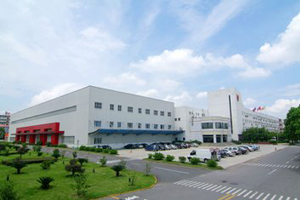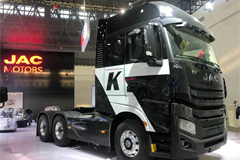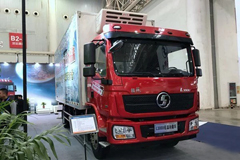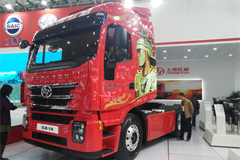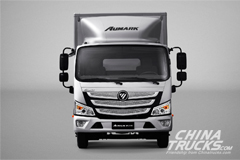Outlook 2012: Growth signals for trucking are present but so are risk factors
www.chinatrucks.com: The economic outlook for trucking may be as muddled right now as that for the North American economy but fears of a double dip recession are over stated the All Eyes on the Economy panel concluded at the American Trucking Associations annual conference.
Trucking is facing softening demand and rising costs but capacity should continue to remain tight making continued improvement to revenue per mile possible, according to Bob Costello, chief economist and vice president, American Trucking Associations.
"Right now freight demand is moving sideways, rather than falling off a cliff like it did in 2008. That indicates to me that we might just skirt by another recession," Costello said.
Costello was part of a panel that also included John Felmy, chief economist, American Petroleum Institute and Martin Regalia, PhD, senior vice president and chief economist, United States Chamber of Commerce. The popular All Eyes on the Economy session was moderated once again by Fox News' Stuart Varney.
Regalia echoed Costello's contention that North America would escape a double-dip recession, explaining that the weak economic data that had everyone spooked was the result of a combination of unforeseen events such as the earthquake in Japan, heavy flooding in the US and rebellions across Africa and the Middle East. Regalia expects growth in the order of 2.25% to 2.50% over the next 12 months.
He cautioned, however, that economic growth of this magnitude is not enough to drive down unemployment, one of the major reasons behind the economic malaise in the US.
"We are not headed into double dip recession, "Regalia assured. "But we have to do more. We have to do better...The dirty little secret about economic growth is that the US economy is supposed to grow at least 2.75% per year. If you don't have that kind of growth, you don't have jobs. It's that simple."
What it seems we are headed into for 2012 is more volatility. About 70% of the US economy is dependent on consumer spending and that is only expected to grow about 2% in 2012. Our major trading partner is also getting little out of the trade sector and virtually nothing out of government spending now that stimulus packages are wrapping up and there is pressure to concentrate on austerity measures to reduce federal and state deficits.
A slow growing economy also makes for uneven and choppy progress and that is evident in the fortunes of for-hire carriers. In general, Costello said large fleets are seeing stronger volumes than smaller ones, likely because of their relationships to larger shippers.
"No one is doing great but it feels like larger companies and shippers are outperforming small business right now," Costello said.
Volumes for large TL carriers, for example, are up 11.2% from January 2009 while small TL carriers are still struggling with volumes 5.4% below January 2009. It's a similar story when examining revenues. While revenue per mile for large TL fleets has grown 9.1% since January 2009, small TL fleets are only experiencing a 3.2% gain.
Costello pointed out, however, that any growth in the current environment is a welcomed development.
"This is remarkable. We have never seen anything like this. Freight is growing slowly but we are still seeing revenue per mile growing," he said. "...There has been some growth in capacity but supply and demand remain close to equilibrium. Fleets did a good job of 'right sizing' during the recession....This industry is significantly smaller than it was a few years ago."
While growth signals are present, the risk factors are equally clear. Cost pressures in particular pose a risk for motor carriers over the next year with the inflation rate for items such as fuel, equipment and driver wages exceeding the inflation rate for the broader economy," Costello said.
Take driver wages for example. It's a sad commentary on the plight of the US motor carrier industry that drivers make no more today in real terms (taking inflation into account) than they did in 1990. Driver turnover is running at 79% on average among US carriers and was at 138% at its height prior to the recession.
"Even with unemployment over 9% many fleets are having a hard time finding drivers. For a group that is so sought after, these numbers (driver pay) will go up," Costello said.
Views:0
- FAW TRUCKS Expands Global Reach with Australian Partnership 2025-03-06
- BYD Unveils 2025 T5 Light Truck Series at Shenzhen Commercial Vehicle Expo 2025-03-05
- China's New Energy Heavy Trucks See Record Sales in 2024 2025-02-14
- XCMG New Energy Mining Truck XGE110 Delivered in Bulk to Northwestern Market 2025-02-13
- January Heavy Truck Sales Drop 28% YoY to 70,000 Units 2025-02-06
- XCMG Exports 300 Heavy Trucks to High-End Overseas Market 2025-01-20
- November 2024: New Energy Light Truck Sales Hit 14,000 Units in China 2024-12-19
- November 2024 Sees Surge in New Energy Heavy Trucks in China 2024-12-12
- LANDKING ER: 200km Range, Setting a New Benchmark for Electric Mini Truck 2024-12-11
- LANDKING EH: Setting New Standards for Green Logistics 2024-12-04
Submit Your Requirements, We Are Always At Your Service.
- FAW TRUCKS Expands Global Reach with Australian Partnership
- Foton Leads in February Heavy-Duty Truck Sales with Upgraded Products
- Dongfeng Introduces 2025 New Products and Technologies to Global Dealers
- GAC Hino Showcases New Models at 2025 GAC Int'l Partner Conference
- Foton and Teld New Energy Form JV to Drive New Energy Heavy Truck Development
- JMC Overseas Sales Surge
- Indonesian Ambassador to China Visits Shaanxi Automobile
- FOTON Launches the "Auman Galaxy Global Experience Tour"
- Geely Expands into Pakistan with New Partnership
- Zhizi Auto Successfully Holds 2025 Product Launch Event
- China's New Energy Heavy Trucks See Record Sales in 2024
- January Heavy Truck Sales Drop 28% YoY to 70,000 Units
- November 2024: Heavy Truck Sales Hit New Highs
- November 2024: New Energy Light Truck Sales Hit 14,000 Units in China
- November 2024 Sees Surge in New Energy Heavy Trucks in China
- Heavy Truck Sales Reached 56,000 units in First Three Quarters 2024
- Heavy Truck Sales in September 2024
- Heavy Truck Sales Reach 59,000 Units in July in China
- Tractor Sales in H1, 2024 Reached 162,100 Units, Up 4%
- China's Truck Export Reaches 351,076 Units in H1 2024



